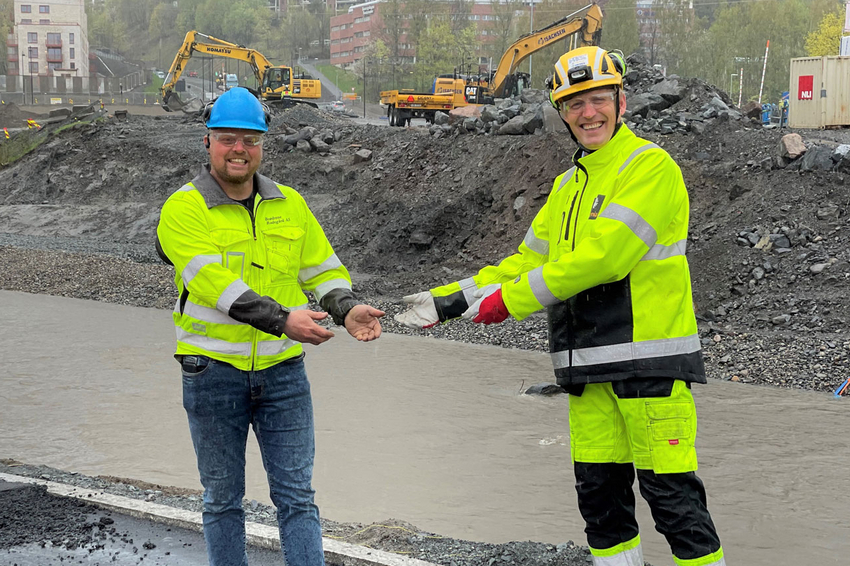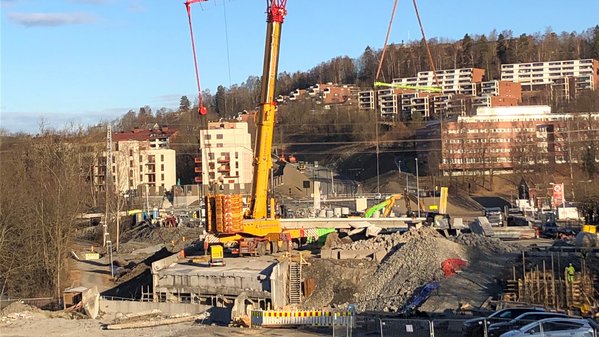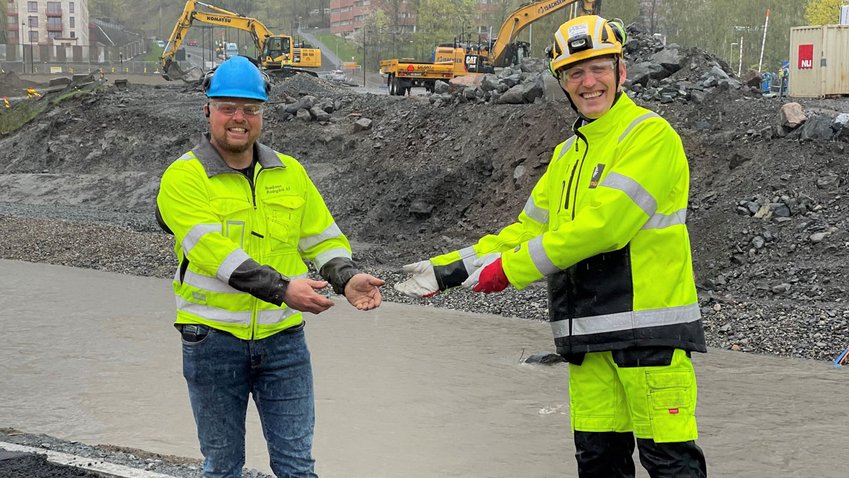A bridge joins the circular economy

In Sandvika, near Oslo, the IMIS joint venture between Implenia and Isachsen is currently renewing a section of the E16 motorway. The contract also includes the demolition and replacement of five bridges. With work well under way, IMIS project manager Ronny Abelsen received an unexpected call. The man on the other end of the line was Kent-Johnny Rodegård, whose family business Brødrene Rodegård AS is currently expanding a local road in Nesbyen, more than one hundred kilometres away.
Rodegård believes there is considerable potential for repurposing in the construction industry – certainly a lot more than is happening now. This led him to ask if one of the old bridges could be moved from Sandvika to Nesbyen. IMIS project manager Ronny Abelsen was the right person to ask: “Sustainability is an integral part of everything we do. A few years ago we offered a similar concrete bridge on the finn.no platform, but without success. So we were really pleased to get this request.”
It didn’t take long before one of the two former Birkheim bridges, weighing around 200 tonnes, had been dismantled into transportable elements and taken by road to its new location. “The bridge elements were as good as new. It was just common sense to reuse them. A clear win-win situation,” says Kent-Johnny Rodegård. The local authority is currently working on the necessary permits, and the bridge should be reassembled in the autumn.
The pragmatic approach taken by IMIS and Rodegård provides an impressive example of how the circular economy can function in practice. In many cases, recycling can even be profitable, reinforcing Implenia’s view that sustainable business models represent an opportunity.
The Norwegian Road Authority, the ultimate client for the E16 project, is also enthusiastic. It has set itself a goal for 2030 of reducing greenhouse gas emissions from its construction work by 50%. A large proportion of its emissions comes from the production of building materials, including emissions from cement kilns. Reusing an entire structure obviously removes a huge burden from the climate.





